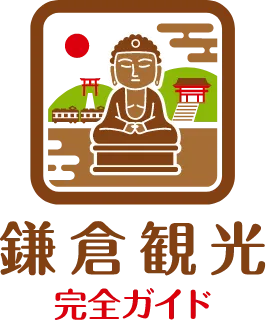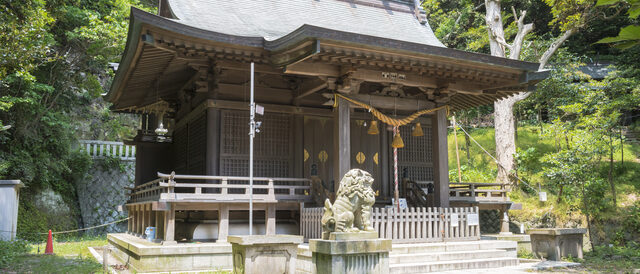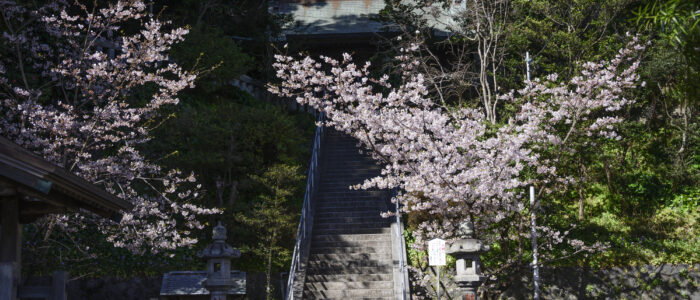Amanawa Shinmei Shrine (甘縄神明神社)
Discover Amanawa Shinmei Shrine (甘縄神明神社)
Amanawa Shinmei Shrine, located in Kamakura, is believed to have been founded in the early 8th century during the Nara period. The high monk Gyoki (行基) is said to have established a sacred site here, which was later developed into a full shrine by the local noble Somedani Taro Tokitada (染谷太郎時忠). As one of the oldest existing shrines in Kamakura, it preserves the atmosphere of Japan’s ancient spirituality. Revered by the Genji clan, including Minamoto no Yoritomo (源頼朝), the first shogun of the Kamakura shogunate, the shrine earned the nickname “Ise’s Separate Shrine” and has long been a center of worship.
Historic Traces and Natural Serenity
The grounds of Amanawa Shinmei Shrine are dotted with remnants of Kamakura’s rich past. Just past the torii gate, you’ll find a stone marker indicating the former residence of Adachi Morinaga (安達盛長), a loyal retainer of Yoritomo and one of the “13 Lords of the Shogun.” Along the stone steps leading up the hill lies the legendary “Birth Well of Hojo Tokimune (北条時宗公産湯の井),” said to have been used during the birth of the famous military leader.
The main hall follows the traditional hira-iri style and features five decorative wooden logs (katsuogi) atop the roof. A giant tabunoki (Machilus thunbergii) tree, selected as one of the “50 Great Trees of Kamakura and the Miura Peninsula,” adds to the sacred ambiance throughout the seasons.
Spiritual Significance and Deities Enshrined
The principal deity is Amaterasu Omikami (天照大神), the sun goddess of Japanese mythology. Other enshrined kami include Ukanomitama no Mikoto (倉稲魂命) for agriculture, Izanami no Mikoto (伊邪那美命) for creation and childbirth, Takemikazuchi no Mikoto (武甕槌命) for protection in battle, and Sugawara no Michizane (菅原道真) for scholarship. Visitors come to pray for family safety, academic success, fertility, and a good harvest. The shrine is deeply connected to the local community and its daily life.
Goshuin and Unique Traditions
Since Amanawa Shinmei Shrine is usually unattended, goshuin (temple stamps) are issued at Yakumo Shrine (八雲神社) in Omachi. If you hope to receive one, be sure to plan ahead before visiting.
Access and Opening Hours
The shrine is conveniently located just a 5-minute walk from Hase Station (長谷駅) on the Enoden Line. There is no dedicated parking, so visitors traveling by car should use nearby coin-operated lots. There are no formal gate hours, but visiting during daylight is recommended for safety and ambiance.
When to Visit: Seasons and Best Times
In spring, cherry blossoms such as Tama-zakura (玉縄桜) bloom from mid-February to March, followed by Somei-yoshino (ソメイヨシノ) in early April. Autumn brings rich foliage. One of the highlights is the view of Yuigahama Beach (由比ヶ浜) from the stone steps. Visiting in the early morning before the crowds arrive offers a meditative experience, where even the rustling of leaves can be heard in stillness. The shrine remains quiet even during the day, making it a perfect stop between tourist spots. If you’re staying at Tosh’s Place (トシズプレイス), you can start your day with a gentle morning walk and a respectful bow—just like the locals do.
Nearby Spots to Explore on Foot
Within walking distance, you’ll find historical sites like Kotoku-in (高徳院, home of the Great Buddha), Hase-dera Temple (長谷寺), Goryo Shrine (御霊神社), Joju-in Temple (成就院), and Kosoku-ji Temple (光則寺). The shoreline of Yuigahama Beach is also nearby, perfect for a seaside stroll after visiting the shrine.
Who Should Visit?
Amanawa Shinmei Shrine is ideal for those who appreciate quiet reflection, historical significance, and the spiritual depth of Shinto. Whether you’re seeking blessings for academic success, fertility, or simply a calm moment amid nature, this sacred site welcomes you. If you’re staying locally with a flexible itinerary, it’s the perfect place to slow down, breathe deeply, and reconnect with something timeless.
Wrap-Up: Spiritual Stillness Beyond the Tourist Trail
Amanawa Shinmei Shrine is a rare and sacred space that preserves the heart of Kamakura’s spiritual legacy. With the freedom of a kitchen-equipped stay at Tosh’s Place (トシズプレイス), you can experience not just a sightseeing destination, but a moment of local reverence and quiet rhythm. Leave time in your itinerary to be still, reflect, and simply be.den gem offers a rare kind of stillness—the perfect way to close your trip or open your heart to Kamakura’s deeper rhythms.


